-
Report Prologue
-
Market Introduction
-
Market Definition 26
-
Scope of The Study 26
- Research
-
Objectives 26
-
List of Assumptions 27
-
Market Structure
-
Market Insights
-
Key Takeaways 29
-
Research
-
Methodology
-
Research Process 33
-
Primary Research 34
-
Secondary Research 34
-
Market Size Estimation 35
-
Forecast
-
Model 36
-
Market Dynamics
-
Introduction 38
- Surging Demand for Both Passenger and Commercial Vehicles
- Growing Use of High-Performance Lightweight Materials in the
- Increasing Use of Recycled Rubber as a Raw
-
Drivers 39
-
Automotive Industry 40
-
Material by Leading Tire Manufacturers 40
-
Restraints 41
-
Fluctuating Raw Material Prices 41
-
Opportunity 42
- Supply Surplus in Natural Rubber 43
-
Continuous Research to Develop Innovative Grades of Automotive Elastomers 42
-
Market Trend 43
-
Market Factor Analysis
-
Supply Chain Analysis 45
- Raw
- Automotive Elastomers Manufacturers 45
- Application Industry 46
- Threat of New Entrants 47
- Threat of Substitute 47
- Bargaining
- Bargaining Power of Buyer 47
-
Material Suppliers 45
-
Distribution Channel 46
-
Porter’s Five Force Analysis 46
-
Threat of Rivalry 47
-
Power of Supplier 47
-
Global
-
Automotive Elastomers Market, by Type
-
Introduction 49
- Natural Rubber 52
- Polybutadiene Rubber (BR) 54
- Ethylene Propylene Diene Monomer (EPDM) 56
- Silicone Rubber (Q) 58
- Chlorinated elastomers 60
-
Thermoset Elastomers (TSE) 51
-
Styrene Butadiene Rubber (SBR) 53
-
Butyl Rubber (IIR) 55
-
Nitrile Butadiene Rubber (NBR) 57
-
Acrylic Rubber (ACM) 59
-
Fluoroelastomers 61
-
Thermoplastic Elastomers (TPE) 62
- Thermoplastic Olefins (TPO) 64
- Thermoplastic Polyurethane (TPU)
- Thermoplastic Polyester Elastomers (TPC) 67
- Copolyesters
- Copolyamides (COPA) 69
- Polyether Block
-
Styrene Block Copolymer (SBC) 63
-
Thermoplastic Vulcanizates (TPV) 65
-
(COPE) 68
-
Amide (PEBA) 70
-
Global Automotive Elastomers Market, By Application
-
Introduction 73
-
Tire 75
-
Interior 76
- Hoses & Seals 78
- Breaks & Suspensions
- Door Panels 80
- Transmission & Conveyor Belts
- Dash Boards 82
- Seatings 83
- Instrument
-
Airbags 77
-
& Soft Touch Panels 84
-
Exterior 85
- Front End Body
- Bumper Fascia 87
- Rocker Panel 88
-
Panel 86
-
Roof Molds & Window Shields 89
-
Global Automotive Elastomers Market,
-
By Vehicle Type
-
Introduction 91
- Passenger Cars 93
- Medium & Heavy Commercial
-
Light Commercial Vehicles (LCV) 94
-
Vehicles (M/HCV) 95
-
Global Automotive Elastomers Market, by Region
-
Introduction 97
-
North America 102
- PESTL Analysis
- Introduction 102
- The U.S. 109
-
Canada 113
-
Europe 118
- PESTL Analysis 118
- Germany 126
- UK. 131
- France 139
- Spain 143
- Poland 151
- Rest Of Europe 155
- PESTL Analysis 160
- Introduction
- China 167
-
Introduction 119
-
Russia 135
-
Italy 147
-
Asia-Pacific 159
-
Japan 171
- India 175
-
Rest of Asia-Pacific 179
-
Latin America 183
- PESTL
- Introduction 184
- Brazil 191
- Argentina 199
- Rest of Latin America
-
Analysis 183
-
Mexico 195
-
Middle East & Africa 207
- PESTL Analysis
- Introduction 209
- Turkey 215
- Saudi Arabia 224
- Rest of Middle East 228
-
UAE 220
-
Competitive Landscape
-
Introduction 234
-
Key Developments
-
of Major Market Players 235
-
Company Profiles
-
BASF SE
- Company Overview 238
- Financial Overview 238
- Key Developments 239
- Key
-
Products Offerings 239
-
Strategies 239
-
The Dow Chemical Company 240
- Company
- Financial Overview 240
- Products Offerings
- Key Developments 241
- Key Strategies 241
- Company Overview 242
- Financial
- Products Offerings 243
- Key Developments
- Key Strategies 243
-
Overview 240
-
Exxon Mobil Corp. 242
-
Overview 242
-
LG Chem Ltd. 244
- Financial Overview 244
- Products
- Key Developments 245
- Key Strategies
-
Company Overview 244
-
Offerings 245
-
JSR Corporation 246
- Company Overview 246
- Products Offerings 247
- Key Strategies 247
-
Financial Overview 246
-
Key Developments 247
-
ARLANXEO
- Company Overview 248
- Financial Overview 248
- Key Developments 249
-
Products Offerings 249
-
Key
-
Strategies 249
-
Teknor Apex Company, Inc 250
- Company
- Financial Overview 250
- Products Offerings
- Key Developments 251
- Key Strategies 251
- Company Overview 252
- Financial Overview
- Products Offerings 253
- Key Developments 253
-
Overview 250
-
SABIC 252
-
Key Strategies 253
-
Mitsui Chemicals, Inc. 254
- Financial Overview 254
- Key Developments 255
-
Company Overview 254
-
Products Offerings 255
-
Key Strategies 255
-
Versalis SpA. 256
- Company Overview
- Financial Overview 256
- Products Offerings
- Key Developments 257
- Key Strategies 257
- Company Overview 258
- Products
- Key Developments 259
- Key Strategies
-
Kuraray Co., Ltd 258
-
Offerings 259
-
Nizhnekamskneftekhim PJSC 260
- Company Overview
- Financial Overview 260
- Products Offerings
- Key Developments 261
- Key Strategies 261
- Company Overview 262
- Products Offerings 263
- Key Strategies 263
-
Sumitomo Chemical Co., Ltd 262
-
Financial Overview 262
-
Key Developments 263
-
Solvay
- Company Overview 264
- Financial Overview
- Products Offerings 265
- Key Developments
- Key Strategies 265
-
SA 264
-
KRAIBURG TPE 266
- Financial Overview 266
- Key Developments 266
-
Company Overview 266
-
Products Offerings 266
-
.Key Strategies 266
-
List of Tables
-
MARKET SYNOPSIS
-
LIST OF ASSUMPTIONS 26
-
GLOBAL AUTOMOTIVE
-
ELASTOMERS MARKET, BY TYPE, 2020-2027(USD MILLION) 49
-
GLOBAL AUTOMOTIVE
-
ELASTOMERS MARKET, BY TYPE, 2020-2027(KILO TONS) 50
-
GLOBAL AUTOMOTIVE
-
ELASTOMERS MARKET FOR THERMOSET ELASTOMERS (TSE), 2020-2027(USD MILLION) 50
-
TABLE
-
GLOBAL AUTOMOTIVE ELASTOMERS MARKET FOR THERMOSET ELASTOMERS (TSE), 2020-2027(KILO
-
TONS) 51
-
GLOBAL AUTOMOTIVE ELASTOMERS MARKET FOR NATURAL RUBBER,
-
GLOBAL AUTOMOTIVE ELASTOMERS MARKET
-
FOR NATURAL RUBBER, 2020-2027(KILO TONS) 52
-
GLOBAL AUTOMOTIVE
-
ELASTOMERS MARKET FOR STYRENE BUTADIENE RUBBER (SBR), 2020-2027(USD MILLION) 52
-
TABLE
-
GLOBAL AUTOMOTIVE ELASTOMERS MARKET FOR STYRENE BUTADIENE RUBBER (SBR), 2020-2027(KILO
-
TONS) 53
-
GLOBAL AUTOMOTIVE ELASTOMERS MARKET FOR POLYBUTADIENE
-
RUBBER (BR), 2020-2027(USD MILLION) 53
-
GLOBAL AUTOMOTIVE ELASTOMERS
-
MARKET FOR BUTYL RUBBER (IIR), 2020-2027(USD MILLION) 54
-
GLOBAL
-
AUTOMOTIVE ELASTOMERS MARKET FOR BUTYL RUBBER (IIR), 2020-2027(KILO TONS) 55
-
TABLE
-
GLOBAL AUTOMOTIVE ELASTOMERS MARKET FOR ETHYLENE PROPYLENE DIENE MONOMER (EPDM),
-
MILLION) 55
-
GLOBAL AUTOMOTIVE ELASTOMERS MARKET FOR ETHYLENE
-
PROPYLENE DIENE MONOMER (EPDM), 2020-2027(KILO TONS) 56
-
GLOBAL
-
AUTOMOTIVE ELASTOMERS MARKET FOR NITRILE BUTADIENE RUBBER (NBR), 2020-2027(USD MILLION)
-
GLOBAL AUTOMOTIVE ELASTOMERS MARKET FOR NITRILE BUTADIENE
-
RUBBER (NBR), 2020-2027(KILO TONS) 57
-
GLOBAL AUTOMOTIVE ELASTOMERS
-
MARKET FOR SILICONE RUBBER (Q), 2020-2027(USD MILLION) 57
-
GLOBAL
-
AUTOMOTIVE ELASTOMERS MARKET FOR SILICONE RUBBER (Q), 2020-2027(KILO TONS) 58
-
TABLE
-
GLOBAL AUTOMOTIVE ELASTOMERS MARKET FOR ACRYLIC RUBBER (ACM), 2020-2027(USD MILLION)
-
GLOBAL AUTOMOTIVE ELASTOMERS MARKET FOR ACRYLIC RUBBER (ACM),
-
GLOBAL AUTOMOTIVE ELASTOMERS MARKET FOR
-
CHLORINATED ELASTOMERS, 2020-2027(USD MILLION) 59
-
GLOBAL AUTOMOTIVE
-
ELASTOMERS MARKET FOR CHLORINATED ELASTOMERS, 2020-2027(KILO TONS) 60
-
TABLE
-
GLOBAL AUTOMOTIVE ELASTOMERS MARKET FOR FLUOROELASTOMERS, 2020-2027(USD MILLION)
-
GLOBAL AUTOMOTIVE ELASTOMERS MARKET FOR FLUOROELASTOMERS,
-
GLOBAL AUTOMOTIVE ELASTOMERS MARKET FOR
-
THERMOPLASTIC ELASTOMER (TPE), 2020-2027(USD MILLION) 61
-
GLOBAL
-
AUTOMOTIVE ELASTOMERS MARKET FOR THERMOPLASTIC ELASTOMER (TPE), 2020-2027(KILO TONS)
-
GLOBAL AUTOMOTIVE ELASTOMERS MARKET FOR STYRENE BLOCK COPOLYMER
-
(SBC), 2020-2027(USD MILLION) 62
-
GLOBAL AUTOMOTIVE ELASTOMERS
-
MARKET FOR STYRENE BLOCK COPOLYMER (SBC), 2020-2027(KILO TONS) 63
-
TABLE
-
GLOBAL AUTOMOTIVE ELASTOMERS MARKET FOR THERMOPLASTIC OLEFINS (TPO), 2020-2027(USD
-
MILLION) 63
-
GLOBAL AUTOMOTIVE ELASTOMERS MARKET FOR THERMOPLASTIC
-
OLEFINS (TPO), 2020-2027(KILO TONS) 64
-
GLOBAL AUTOMOTIVE ELASTOMERS
-
MARKET FOR THERMOPLASTIC VULCANIZATES (TPV), 2020-2027(USD MILLION) 64
-
TABLE
-
GLOBAL AUTOMOTIVE ELASTOMERS MARKET FOR THERMOPLASTIC VULCANIZATES (TPV), 2020-2027(KILO
-
TONS) 65
-
GLOBAL AUTOMOTIVE ELASTOMERS MARKET FOR THERMOPLASTIC
-
POLYURETHANE (TPU), 2020-2027(USD MILLION) 65
-
GLOBAL AUTOMOTIVE
-
ELASTOMERS MARKET FOR THERMOPLASTIC POLYURETHANE (TPU), 2020-2027(KILO TONS) 66
-
TABLE
-
GLOBAL AUTOMOTIVE ELASTOMERS MARKET FOR THERMOPLASTIC POLYESTER ELASTOMERS (TPC),
-
MILLION) 66
-
GLOBAL AUTOMOTIVE ELASTOMERS MARKET FOR THERMOPLASTIC
-
POLYESTER ELASTOMERS (TPC), 2020-2027(KILO TONS) 67
-
GLOBAL AUTOMOTIVE
-
ELASTOMERS MARKET FOR COPOLYESTERS (COPE), 2020-2027(USD MILLION) 67
-
TABLE
-
GLOBAL AUTOMOTIVE ELASTOMERS MARKET FOR COPOLYESTERS (COPE), 2020-2027(KILO TONS)
-
GLOBAL AUTOMOTIVE ELASTOMERS MARKET FOR COPOLYAMIDES (COPA),
-
GLOBAL AUTOMOTIVE ELASTOMERS MARKET
-
FOR COPOLYAMIDES (COPA), 2020-2027(KILO TONS) 69
-
GLOBAL AUTOMOTIVE
-
ELASTOMERS MARKET FOR POLYETHER BLOCK AMIDE (PEBA), 2020-2027(USD MILLION) 69
-
TABLE
-
GLOBAL AUTOMOTIVE ELASTOMERS MARKET FOR POLYETHER BLOCK AMIDE (PEBA), 2020-2027(KILO
-
TONS) 70
-
GLOBAL AUTOMOTIVE ELASTOMERS MARKET, BY APPLICATION,
-
GLOBAL AUTOMOTIVE ELASTOMERS MARKET,
-
BY APPLICATION, 2020-2027(KILO TONS) 73
-
GLOBAL AUTOMOTIVE ELASTOMERS
-
MARKET FOR TIRE, 2020-2027(USD MILLLION) 74
-
GLOBAL AUTOMOTIVE
-
ELASTOMERS MARKET FOR TIRE, 2020-2027(KILO TONS) 74
-
GLOBAL AUTOMOTIVE
-
ELASTOMERS MARKET FOR INTERIOR, 2020-2027, (USD MILLION) 75
-
GLOBAL
-
AUTOMOTIVE ELASTOMERS MARKET FOR INTERIOR, 2020-2027, (KILO TONS) 75
-
TABLE
-
GLOBAL AUTOMOTIVE ELASTOMERS MARKET FOR AIRBAGS, 2020-2027, (USD MILLION) 76
-
TABLE
-
GLOBAL AUTOMOTIVE ELASTOMERS MARKET FOR AIRBAGS, 2020-2027, (KILO TONS) 76
-
TABLE
-
GLOBAL AUTOMOTIVE ELASTOMERS MARKET FOR HOSES & SEALS, 2020-2027, (USD MILLION)
-
GLOBAL AUTOMOTIVE ELASTOMERS MARKET FOR HOSES & SEALS,
-
GLOBAL AUTOMOTIVE ELASTOMERS MARKET
-
FOR BREAKS & SUSPENSIONS, 2020-2027, (USD MILLION) 78
-
GLOBAL
-
AUTOMOTIVE ELASTOMERS MARKET FOR BREAKS & SUSPENSIONS, 2020-2027, (KILO TONS)
-
GLOBAL AUTOMOTIVE ELASTOMERS MARKET FOR DOOR PANELS, 2020-2027,
-
(USD MILLION) 79
-
GLOBAL AUTOMOTIVE ELASTOMERS MARKET FOR DOOR
-
PANELS, 2020-2027, (KILO TONS) 79
-
GLOBAL AUTOMOTIVE ELASTOMERS
-
MARKET FOR TRANSMISSION & CONVEYOR BELTS, 2020-2027, (USD MILLION) 80
-
TABLE
-
GLOBAL AUTOMOTIVE ELASTOMERS MARKET FOR TRANSMISSION & CONVEYOR BELTS, 2020-2027,
-
(KILO TONS) 80
-
GLOBAL AUTOMOTIVE ELASTOMERS MARKET FOR DASH BOARDS,
-
GLOBAL AUTOMOTIVE ELASTOMERS MARKET
-
FOR DASH BOARDS, 2020-2027, (KILO TONS) 81
-
GLOBAL AUTOMOTIVE
-
ELASTOMERS MARKET FOR SEATINGS, 2020-2027, (USD MILLION) 82
-
GLOBAL
-
AUTOMOTIVE ELASTOMERS MARKET FOR SEATINGS, 2020-2027, (KILO TONS) 82
-
TABLE
-
GLOBAL AUTOMOTIVE ELASTOMERS MARKET FOR INSTRUMENT & SOFT TOUCH PANELS, 2020-2027,
-
(USD MILLION) 83
-
GLOBAL AUTOMOTIVE ELASTOMERS MARKET FOR INSTRUMENT
-
& SOFT TOUCH PANELS, 2020-2027, (KILO TONS) 83
-
GLOBAL AUTOMOTIVE
-
ELASTOMERS MARKET FOR EXTERIOR, 2020-2027, (USD MILLION) 84
-
GLOBAL
-
AUTOMOTIVE ELASTOMERS MARKET FOR EXTERIOR, 2020-2027, (KILO TONS) 84
-
TABLE
-
GLOBAL AUTOMOTIVE ELASTOMERS MARKET FOR FRONT END BODY PANEL, 2020-2027, (USD
-
MILLION) 85
-
GLOBAL AUTOMOTIVE ELASTOMERS MARKET FOR FRONT END
-
BODY PANEL, 2020-2027, (KILO TONS) 85
-
GLOBAL AUTOMOTIVE ELASTOMERS
-
MARKET FOR BUMPER FASCIA, 2020-2027, (USD MILLION) 86
-
GLOBAL
-
AUTOMOTIVE ELASTOMERS MARKET FOR BUMPER FASCIA, 2020-2027, (KILO TONS) 86
-
TABLE
-
GLOBAL AUTOMOTIVE ELASTOMERS MARKET FOR ROCKER PANEL, 2020-2027, (USD MILLION)
-
GLOBAL AUTOMOTIVE ELASTOMERS MARKET FOR ROCKER PANEL, 2020-2027,
-
(KILO TONS) 87
-
GLOBAL AUTOMOTIVE ELASTOMERS MARKET FOR ROOF MOLDS
-
& WINDOW SHIELDS, 2020-2027, (USD MILLION) 88
-
GLOBAL AUTOMOTIVE
-
ELASTOMERS MARKET FOR ROOF MOLDS & WINDOW SHIELDS, 2020-2027, (KILO TONS) 88
-
TABLE
-
GLOBAL AUTOMOTIVE ELASTOMERS MARKET, BY VEHICLE TYPE, 2020-2027, (USD BILLION)
-
GLOBAL AUTOMOTIVE ELASTOMERS MARKET, BY VEHICLE TYPE, 2020-2027,
-
(KILO TONS) 91
-
GLOBAL AUTOMOTIVE ELASTOMERS MARKET FOR PASSENGER
-
CARS, 2020-2027, (USD MILLION) 92
-
GLOBAL AUTOMOTIV ELASTOMERS
-
MARKET FOR PASSENGER CARS, 2020-2027, (KILO TONS) 92
-
GLOBAL AUTOMOTIVE
-
ELASTOMERS MARKET FOR LIGHT COMMERCIAL VEHICLES (LCV), 2020-2027, (USD MILLION)
-
GLOBAL AUTOMOTIVE ELASTOMERS MARKET FOR LIGHT COMMERCIAL VEHICLES
-
(LCV), 2020-2027, (KILO TONS) 93
-
GLOBAL AUTOMOTIVE ELASTOMERS
-
MARKET FOR MEDIUM & HEAVY COMMERCIAL VEHICLES (M/HCV),
-
(USD MILLION) 94
-
GLOBAL AUTOMOTIVE ELASTOMERS MARKET FOR MEDIUM
-
& HEAVY COMMERCIAL VEHICLES (M/HCV),
-
TABLE
-
GLOBAL AUTOMOTIVE ELASTOMERS MARKET, BY REGION, 2020-2027(USD MILLION) 96
-
TABLE
-
GLOBAL AUTOMOTIVE ELASTOMERS MARKET, BY REGION, 2020-2027(KILO TONS) 97
-
TABLE
-
GLOBAL AUTOMOTIVE ELASTOMERS MARKET, BY TYPE , 2020-2027(USD MILLION) 98
-
TABLE
-
GLOBAL AUTOMOTIVE ELASTOMERS MARKET, BY TYPE, 2020-2027(KILO TONS) 98
-
TABLE
-
GLOBAL AUTOMOTIVE ELASTOMERS MARKET, BY APPLICATION , 2020-2027(USD MILLION)
-
GLOBAL AUTOMOTIVE ELASTOMERS MARKET, BY APPLICATION, 2020-2027(KILO
-
TONS) 99
-
GLOBAL AUTOMOTIVE ELASTOMERS MARKET, BY VEHICLE TYPE
-
, 2020-2027(USD MILLION) 99
-
GLOBAL AUTOMOTIVE ELASTOMERS MARKET,
-
BY VEHICLE TYPE, 2020-2027(KILO TONS) 99
-
NORTH AMERICA AUTOMOTIVE
-
ELASTOMERS MARKET, BY COUNTRY, 2020-2027(USD MILLION) 101
-
NORTH
-
AMERICA AUTOMOTIVE ELASTOMERS MARKET, BY COUNTRY, 2020-2027(KILO TONS) 102
-
TABLE
-
NORTH AMERICA AUTOMOTIVE ELASTOMERS MARKET, BY TYPE, 2020-2027(USD MILLION) 102
-
TABLE
-
NORTH AMERICA AUTOMOTIVE ELASTOMERS MARKET, BY TYPE, 2020-2027(KILO TONS) 102
-
TABLE
-
NORTH AMERICA AUTOMOTIVE ELASTOMERS MARKET, BY TYPE, FOR THERMOSET ELASTOMERS
-
(TSE),
-
NORTH AMERICA AUTOMOTIVE
-
ELASTOMERS MARKET, BY TYPE FOR THERMOSET ELASTOMERS (TSE),
-
TONS) 104
-
NORTH AMERICA AUTOMOTIVE ELASTOMERS MARKET, BY TYPE,
-
FOR THERMOPLASTIC ELASTOMERS (TPE),
-
TABLE
-
NORTH AMERICA AUTOMOTIVE ELASTOMERS MARKET, BY TYPE FOR THERMOPLASTIC ELASTOMERS
-
(TPE),
-
NORTH AMERICA AUTOMOTIVE
-
ELASTOMERS MARKET, BY APPLICATION , 2020-2027(USD MILLION) 105
-
TABLE 101
-
NORTH AMERICA AUTOMOTIVE ELASTOMERS MARKET, BY APPLICATION, 2020-2027(KILO TONS)
-
NORTH AMERICA AUTOMOTIVE ELASTOMERS MARKET, BY APPLICATION,
-
FOR INTERIOR, 2020-2027(USD MILLION) 106
-
NORTH AMERICA AUTOMOTIVE
-
ELASTOMERS MARKET, BY APPLICATION FOR INTERIOR, 2020-2027(KILO TONS) 107
-
TABLE
-
NORTH AMERICA AUTOMOTIVE ELASTOMERS MARKET, BY APPLICATION, FOR EXTERIOR, 2020-2027(USD
-
MILLION) 107
-
NORTH AMERICA AUTOMOTIVE ELASTOMERS MARKET, BY
-
APPLICATION FOR EXTERIOR, 2020-2027(KILO TONS) 107
-
NORTH AMERICA
-
AUTOMOTIVE ELASTOMERS MARKET, BY VEHICLE TYPE , 2020-2027(USD MILLION) 108
-
TABLE
-
NORTH AMERICA AUTOMOTIVE ELASTOMERS MARKET, BY VEHICLE TYPE, 2020-2027(KILO
-
TONS) 108
-
U.S. AUTOMOTIVE ELASTOMERS MARKET, BY APPLICATION
-
, 2020-2027(USD MILLION) 108
-
U.S. AUTOMOTIVE ELASTOMERS MARKET,
-
BY TYPE, 2020-2027(KILO TONS) 109
-
U.S. AUTOMOTIVE ELASTOMERS
-
MARKET, BY TYPE, FOR THERMOSET ELASTOMERS (TSE), 2020-2027(USD MILLION) 109
-
TABLE
-
U.S. AUTOMOTIVE ELASTOMERS MARKET, BY TYPE FOR THERMOSET ELASTOMERS (TSE), 2020-2027(KILO
-
TONS) 110
-
U.S. AUTOMOTIVE ELASTOMERS MARKET, BY TYPE, FOR THERMOPLASTIC
-
ELASTOMERS (TPE), 2020-2027(USD MILLION) 110
-
U.S. AUTOMOTIVE
-
ELASTOMERS MARKET, BY TYPE FOR THERMOPLASTIC ELASTOMERS (TPE), 2020-2027(KILO TONS)
-
U.S. AUTOMOTIVE ELASTOMERS MARKET, BY APPLICATION , 2020-2027(USD
-
MILLION) 111
-
U.S. AUTOMOTIVE ELASTOMERS MARKET, BY APPLICATION,
-
U.S. AUTOMOTIVE ELASTOMERS MARKET,
-
BY VEHICLE TYPE , 2020-2027(USD MILLION) 112
-
U.S. AUTOMOTIVE
-
ELASTOMERS MARKET, BY VEHICLE TYPE, 2020-2027(KILO TONS) 112
-
TABLE 118
-
CANADA AUTOMOTIVE ELASTOMERS MARKET, BY APPLICATION , 2020-2027(USD MILLION) 112
-
TABLE
-
CANADA AUTOMOTIVE ELASTOMERS MARKET, BY TYPE, 2020-2027(KILO TONS) 113
-
TABLE
-
CANADA AUTOMOTIVE ELASTOMERS MARKET, BY TYPE, FOR THERMOSET ELASTOMERS (TSE),
-
CANADA AUTOMOTIVE ELASTOMERS MARKET,
-
BY TYPE FOR THERMOSET ELASTOMERS (TSE), 2020-2027(KILO TONS) 114
-
TABLE
-
CANADA AUTOMOTIVE ELASTOMERS MARKET, BY TYPE, FOR THERMOPLASTIC ELASTOMERS (TPE),
-
CANADA AUTOMOTIVE ELASTOMERS MARKET,
-
BY TYPE FOR THERMOPLASTIC ELASTOMERS (TPE), 2020-2027(KILO TONS) 115
-
TABLE
-
CANADA AUTOMOTIVE ELASTOMERS MARKET, BY APPLICATION , 2020-2027(USD MILLION)
-
CANADA AUTOMOTIVE ELASTOMERS MARKET, BY APPLICATION, 2020-2027(KILO
-
TONS) 116
-
CANADA AUTOMOTIVE ELASTOMERS MARKET, BY VEHICLE TYPE
-
, 2020-2027(USD MILLION) 116
-
CANADA AUTOMOTIVE ELASTOMERS MARKET,
-
BY VEHICLE TYPE, 2020-2027(KILO TONS) 116
-
EUROPE AUTOMOTIVE
-
ELASTOMERS MARKET, BY COUNTRY, 2020-2027(USD MILLION) 118
-
EUROPE
-
AUTOMOTIVE ELASTOMERS MARKET, BY COUNTRY, 2020-2027(KILO TONS) 118
-
TABLE
-
EUROPE AUTOMOTIVE ELASTOMERS MARKET, BY TYPE , 2020-2027(USD MILLION) 119
-
TABLE
-
EUROPE AUTOMOTIVE ELASTOMERS MARKET, BY TYPE, 2020-2027(KILO TONS) 119
-
TABLE
-
EUROPE AUTOMOTIVE ELASTOMERS MARKET, BY TYPE, FOR THERMOSET ELASTOMERS (TSE),
-
EUROPE AUTOMOTIVE ELASTOMERS MARKET,
-
BY TYPE FOR THERMOSET ELASTOMERS (TSE), 2020-2027(KILO TONS) 121
-
TABLE
-
EUROPE AUTOMOTIVE ELASTOMERS MARKET, BY TYPE, FOR THERMOPLASTIC ELASTOMERS (TPE),
-
EUROPE AUTOMOTIVE ELASTOMERS MARKET,
-
BY TYPE FOR THERMOPLASTIC ELASTOMERS (TPE), 2020-2027(KILO TONS) 122
-
TABLE
-
EUROPE AUTOMOTIVE ELASTOMERS MARKET, BY APPLICATION , 2020-2027(USD MILLION)
-
EUROPE AUTOMOTIVE ELASTOMERS MARKET, BY APPLICATION, 2020-2027(KILO
-
TONS) 123
-
EUROPE AUTOMOTIVE ELASTOMERS MARKET, BY APPLICATION,
-
FOR INTERIOR, 2020-2027(USD MILLION) 123
-
EUROPE AUTOMOTIVE ELASTOMERS
-
MARKET, BY APPLICATION,FOR INTERIOR, 2020-2027(KILO TONS) 124
-
TABLE 140
-
EUROPE AUTOMOTIVE ELASTOMERS MARKET, BY APPLICATION, FOR EXTERIOR, 2020-2027(USD
-
MILLION) 124
-
EUROPE AUTOMOTIVE ELASTOMERS MARKET, BY APPLICATION,
-
FOR EXTERIOR, 2020-2027(KILO TONS) 124
-
EUROPE AUTOMOTIVE ELASTOMERS
-
MARKET, BY VEHICLE TYPE , 2020-2027(USD MILLION) 125
-
EUROPE
-
AUTOMOTIVE ELASTOMERS MARKET, BY VEHICLE TYPE, 2020-2027(KILO TONS) 125
-
TABLE
-
GERMANY AUTOMOTIVE ELASTOMERS MARKET, BY APPLICATION , 2020-2027(USD MILLION)
-
GERMANY AUTOMOTIVE ELASTOMERS MARKET, BY TYPE, 2020-2027(KILO
-
TONS) 126
-
GERMANY AUTOMOTIVE ELASTOMERS MARKET, BY TYPE, FOR
-
THERMOSET ELASTOMERS (TSE), 2020-2027(USD MILLION) 126
-
GERMANY
-
AUTOMOTIVE ELASTOMERS MARKET, BY TYPE FOR THERMOSET ELASTOMERS (TSE), 2020-2027(KILO
-
TONS) 127
-
GERMANY AUTOMOTIVE ELASTOMERS MARKET, BY TYPE, FOR
-
THERMOPLASTIC ELASTOMERS (TPE),
-
TABLE
-
GERMANY AUTOMOTIVE ELASTOMERS MARKET, BY TYPE FOR THERMOPLASTIC ELASTOMERS (TPE),
-
GERMANY AUTOMOTIVE ELASTOMERS MARKET,
-
BY APPLICATION , 2020-2027(USD MILLION) 128
-
GERMANY AUTOMOTIVE
-
ELASTOMERS MARKET, BY APPLICATION, 2020-2027(KILO TONS) 129
-
TABLE 152
-
GERMANY AUTOMOTIVE ELASTOMERS MARKET, BY VEHICLE TYPE , 2020-2027(USD MILLION) 129
-
TABLE
-
GERMANY AUTOMOTIVE ELASTOMERS MARKET, BY VEHICLE TYPE, 2020-2027(KILO TONS)
-
UK. AUTOMOTIVE ELASTOMERS MARKET, BY APPLICATION , 2020-2027(USD
-
MILLION) 130
-
UK. AUTOMOTIVE ELASTOMERS MARKET, BY TYPE, 2020-2027(KILO
-
TONS) 130
-
UK AUTOMOTIVE ELASTOMERS MARKET, BY TYPE, FOR THERMOSET
-
ELASTOMERS (TSE), 2020-2027(USD MILLION) 131
-
UK AUTOMOTIVE ELASTOMERS
-
MARKET, BY TYPE FOR THERMOSET ELASTOMERS (TSE), 2020-2027(KILO TONS) 131
-
TABLE
-
UK AUTOMOTIVE ELASTOMERS MARKET, BY TYPE, FOR THERMOPLASTIC ELASTOMERS (TPE),
-
UK AUTOMOTIVE ELASTOMERS MARKET,
-
BY TYPE FOR THERMOPLASTIC ELASTOMERS (TPE), 2020-2027(KILO TONS) 132
-
TABLE
-
UK. AUTOMOTIVE ELASTOMERS MARKET, BY APPLICATION , 2020-2027(USD MILLION) 133
-
TABLE
-
UK. AUTOMOTIVE ELASTOMERS MARKET, BY APPLICATION, 2020-2027(KILO TONS) 133
-
TABLE
-
UK. AUTOMOTIVE ELASTOMERS MARKET, BY VEHICLE TYPE , 2020-2027(USD MILLION) 133
-
TABLE
-
UK. AUTOMOTIVE ELASTOMERS MARKET, BY VEHICLE TYPE, 2020-2027(KILO TONS) 134
-
TABLE
-
RUSSIA AUTOMOTIVE ELASTOMERS MARKET, BY APPLICATION , 2020-2027(USD MILLION)
-
RUSSIA AUTOMOTIVE ELASTOMERS MARKET, BY TYPE, 2020-2027(KILO
-
TONS) 134
-
RUSSIA AUTOMOTIVE ELASTOMERS MARKET, BY TYPE, FOR
-
THERMOSET ELASTOMERS (TSE), 2020-2027(USD MILLION) 135
-
RUSSIA
-
AUTOMOTIVE ELASTOMERS MARKET, BY TYPE FOR THERMOSET ELASTOMERS (TSE), 2020-2027(KILO
-
TONS) 135
-
RUSSIA AUTOMOTIVE ELASTOMERS MARKET, BY TYPE, FOR
-
THERMOPLASTIC ELASTOMERS (TPE), 2020-2027(USD MILLION) 136
-
RUSSIA
-
AUTOMOTIVE ELASTOMERS MARKET, BY TYPE FOR THERMOPLASTIC ELASTOMERS (TPE), 2020-2027(KILO
-
TONS) 136
-
RUSSIA AUTOMOTIVE ELASTOMERS MARKET, BY APPLICATION
-
, 2020-2027(USD MILLION) 137
-
RUSSIA AUTOMOTIVE ELASTOMERS MARKET,
-
BY APPLICATION, 2020-2027(KILO TONS) 137
-
RUSSIA AUTOMOTIVE ELASTOMERS
-
MARKET, BY VEHICLE TYPE , 2020-2027(USD MILLION) 137
-
RUSSIA
-
AUTOMOTIVE ELASTOMERS MARKET, BY VEHICLE TYPE, 2020-2027(KILO TONS) 138
-
TABLE
-
FRANCE AUTOMOTIVE ELASTOMERS MARKET, BY APPLICATION , 2020-2027(USD MILLION)
-
FRANCE AUTOMOTIVE ELASTOMERS MARKET, BY TYPE, 2020-2027(KILO
-
TONS) 138
-
FRANCE AUTOMOTIVE ELASTOMERS MARKET, BY TYPE, FOR
-
THERMOSET ELASTOMERS (TSE), 2020-2027(USD MILLION) 139
-
FRANCE
-
AUTOMOTIVE ELASTOMERS MARKET, BY TYPE FOR THERMOSET ELASTOMERS (TSE), 2020-2027(KILO
-
TONS) 139
-
FRANCE AUTOMOTIVE ELASTOMERS MARKET, BY TYPE, FOR
-
THERMOPLASTIC ELASTOMERS (TPE), 2020-2027(USD MILLION) 140
-
FRANCE
-
AUTOMOTIVE ELASTOMERS MARKET, BY TYPE FOR THERMOPLASTIC ELASTOMERS (TPE), 2020-2027(KILO
-
TONS) 140
-
FRANCE AUTOMOTIVE ELASTOMERS MARKET, BY APPLICATION
-
, 2020-2027(USD MILLION) 141
-
FRANCE AUTOMOTIVE ELASTOMERS MARKET,
-
BY APPLICATION, 2020-2027(KILO TONS) 141
-
FRANCE AUTOMOTIVE ELASTOMERS
-
MARKET, BY VEHICLE TYPE , 2020-2027(USD MILLION) 141
-
FRANCE
-
AUTOMOTIVE ELASTOMERS MARKET, BY VEHICLE TYPE, 2020-2027(KILO TONS) 142
-
TABLE
-
SPAIN AUTOMOTIVE ELASTOMERS MARKET, BY APPLICATION , 2020-2027(USD MILLION)
-
SPAIN AUTOMOTIVE ELASTOMERS MARKET, BY TYPE, 2020-2027(KILO
-
TONS) 142
-
SPAIN AUTOMOTIVE ELASTOMERS MARKET, BY TYPE, FOR THERMOSET
-
ELASTOMERS (TSE), 2020-2027(USD MILLION) 143
-
SPAIN AUTOMOTIVE
-
ELASTOMERS MARKET, BY TYPE FOR THERMOSET ELASTOMERS (TSE), 2020-2027(KILO TONS)
-
SPAIN AUTOMOTIVE ELASTOMERS MARKET, BY TYPE, FOR THERMOPLASTIC
-
ELASTOMERS (TPE), 2020-2027(USD MILLION) 144
-
SPAIN AUTOMOTIVE
-
ELASTOMERS MARKET, BY TYPE FOR THERMOPLASTIC ELASTOMERS (TPE), 2020-2027(KILO TONS)
-
SPAIN AUTOMOTIVE ELASTOMERS MARKET, BY APPLICATION , 2020-2027(USD
-
MILLION) 145
-
SPAIN AUTOMOTIVE ELASTOMERS MARKET, BY APPLICATION,
-
SPAIN AUTOMOTIVE ELASTOMERS MARKET,
-
BY VEHICLE TYPE , 2020-2027(USD MILLION) 145
-
SPAIN AUTOMOTIVE
-
ELASTOMERS MARKET, BY VEHICLE TYPE, 2020-2027(KILO TONS) 146
-
TABLE 194
-
ITALY AUTOMOTIVE ELASTOMERS MARKET, BY APPLICATION , 2020-2027(USD MILLION) 146
-
TABLE
-
ITALY AUTOMOTIVE ELASTOMERS MARKET, BY TYPE, 2020-2027(KILO TONS) 146
-
TABLE
-
ITALY AUTOMOTIVE ELASTOMERS MARKET, BY TYPE, FOR THERMOSET ELASTOMERS (TSE),
-
ITALY AUTOMOTIVE ELASTOMERS MARKET,
-
BY TYPE FOR THERMOSET ELASTOMERS (TSE), 2020-2027(KILO TONS) 147
-
TABLE
-
ITALY AUTOMOTIVE ELASTOMERS MARKET, BY TYPE, FOR THERMOPLASTIC ELASTOMERS (TPE),
-
ITALY AUTOMOTIVE ELASTOMERS MARKET,
-
BY TYPE FOR THERMOPLASTIC ELASTOMERS (TPE), 2020-2027(KILO TONS) 148
-
TABLE
-
ITALY AUTOMOTIVE ELASTOMERS MARKET, BY APPLICATION , 2020-2027(USD MILLION)
-
ITALY AUTOMOTIVE ELASTOMERS MARKET, BY APPLICATION, 2020-2027(KILO
-
TONS) 149
-
ITALY AUTOMOTIVE ELASTOMERS MARKET, BY VEHICLE TYPE
-
, 2020-2027(USD MILLION) 149
-
ITALY AUTOMOTIVE ELASTOMERS MARKET,
-
BY VEHICLE TYPE, 2020-2027(KILO TONS) 150
-
POLAND AUTOMOTIVE
-
ELASTOMERS MARKET, BY APPLICATION , 2020-2027(USD MILLION) 150
-
TABLE 205
-
POLAND AUTOMOTIVE ELASTOMERS MARKET, BY TYPE, 2020-2027(KILO TONS) 150
-
TABLE
-
POLAND AUTOMOTIVE ELASTOMERS MARKET, BY TYPE, FOR THERMOSET ELASTOMERS (TSE),
-
POLAND AUTOMOTIVE ELASTOMERS MARKET,
-
BY TYPE FOR THERMOSET ELASTOMERS (TSE), 2020-2027(KILO TONS) 151
-
TABLE
-
POLAND AUTOMOTIVE ELASTOMERS MARKET, BY TYPE, FOR THERMOPLASTIC ELASTOMERS (TPE),
-
POLAND AUTOMOTIVE ELASTOMERS MARKET,
-
BY TYPE FOR THERMOPLASTIC ELASTOMERS (TPE), 2020-2027(KILO TONS) 152
-
TABLE
-
POLAND AUTOMOTIVE ELASTOMERS MARKET, BY APPLICATION , 2020-2027(USD MILLION)
-
POLAND AUTOMOTIVE ELASTOMERS MARKET, BY APPLICATION, 2020-2027(KILO
-
TONS) 153
-
POLAND AUTOMOTIVE ELASTOMERS MARKET, BY VEHICLE TYPE
-
, 2020-2027(USD MILLION) 153
-
POLAND AUTOMOTIVE ELASTOMERS MARKET,
-
BY VEHICLE TYPE, 2020-2027(KILO TONS) 154
-
REST OF EUROPE AUTOMOTIVE
-
ELASTOMERS MARKET, BY APPLICATION , 2020-2027(USD MILLION) 154
-
TABLE 215
-
REST OF EUROPE AUTOMOTIVE ELASTOMERS MARKET, BY TYPE, 2020-2027(KILO TONS) 154
-
TABLE
-
REST OF EUROPE AUTOMOTIVE ELASTOMERS MARKET, BY TYPE, FOR THERMOSET ELASTOMERS
-
(TSE),
-
REST OF EUROPE AUTOMOTIVE
-
ELASTOMERS MARKET, BY TYPE FOR THERMOSET ELASTOMERS (TSE),
-
TONS) 155
-
REST OF EUROPE AUTOMOTIVE ELASTOMERS MARKET, BY TYPE,
-
FOR THERMOPLASTIC ELASTOMERS (TPE),
-
TABLE
-
REST OF EUROPE AUTOMOTIVE ELASTOMERS MARKET, BY TYPE FOR THERMOPLASTIC ELASTOMERS
-
(TPE),
-
REST OF EUROPE AUTOMOTIVE
-
ELASTOMERS MARKET, BY APPLICATION , 2020-2027(USD MILLION) 157
-
TABLE 221
-
REST OF EUROPE AUTOMOTIVE ELASTOMERS MARKET, BY APPLICATION, 2020-2027(KILO TONS)
-
REST OF EUROPE AUTOMOTIVE ELASTOMERS MARKET, BY VEHICLE
-
TYPE , 2020-2027(USD MILLION) 157
-
REST OF EUROPE AUTOMOTIVE
-
ELASTOMERS MARKET, BY VEHICLE TYPE, 2020-2027(KILO TONS) 158
-
TABLE 224
-
ASIA-PACIFIC AUTOMOTIVE ELASTOMERS MARKET, BY COUNTRY , 2020-2027(USD MILLION) 159
-
TABLE
-
ASIA-PACIFIC AUTOMOTIVE ELASTOMERS MARKET, BY COUNTRY, 2020-2027(KILO TONS)
-
ASIA-PACIFIC AUTOMOTIVE ELASTOMERS MARKET, BY TYPE , 2020-2027(USD
-
MILLION) 160
-
ASIA-PACIFIC AUTOMOTIVE ELASTOMERS MARKET, BY TYPE
-
, 2020-2027(KILO TONS) 160
-
ASIA-PACIFIC AUTOMOTIVE ELASTOMERS
-
MARKET, BY TYPE, FOR THERMOSET ELASTOMERS (TSE), 2020-2027(USD MILLION) 161
-
TABLE
-
ASIA-PACIFIC AUTOMOTIVE ELASTOMERS MARKET, BY TYPE FOR THERMOSET ELASTOMERS
-
(TSE), 2020-2027(KILO TONS) 161
-
ASIA-PACIFIC AUTOMOTIVE ELASTOMERS
-
MARKET, BY TYPE, FOR THERMOPLASTIC ELASTOMERS (TPE),
-
ASIA-PACIFIC AUTOMOTIVE ELASTOMERS MARKET, BY TYPE FOR THERMOPLASTIC
-
ELASTOMERS (TPE),
-
ASIA-PACIFIC
-
AUTOMOTIVE ELASTOMERS MARKET, BY APPLICATION , 2020-2027(USD MILLION) 163
-
TABLE
-
ASIA-PACIFIC AUTOMOTIVE ELASTOMERS MARKET, BY APPLICATION , 2020-2027(KILO TONS)
-
ASIA-PACIFIC AUTOMOTIVE ELASTOMERS MARKET, BY APPLICATION,
-
FOR INTERIOR, 2020-2027(USD MILLION) 164
-
ASIA-PACIFIC AUTOMOTIVE
-
ELASTOMERS MARKET, BY APPLICATION FOR INTERIOR, 2020-2027(KILO TONS) 164
-
TABLE
-
ASIA-PACIFIC AUTOMOTIVE ELASTOMERS MARKET, BY APPLICATION, FOR EXTERIOR, 2020-2027(USD
-
MILLION) 165
-
ASIA-PACIFIC AUTOMOTIVE ELASTOMERS MARKET, BY TYPE
-
FOR EXTERIOR, 2020-2027(KILO TONS) 165
-
ASIA-PACIFIC AUTOMOTIVE
-
ELASTOMERS MARKET, BY VEHICLE TYPE , 2020-2027(USD MILLION) 165
-
TABLE
-
ASIA-PACIFIC AUTOMOTIVE ELASTOMERS MARKET, BY VEHICLE TYPE , 2020-2027(KILO
-
TONS) 166
-
CHINA AUTOMOTIVE ELASTOMERS MARKET, BY TYPE , 2020-2027(USD
-
MILLION) 166
-
CHINA AUTOMOTIVE ELASTOMERS MARKET, BY TYPE , 2020-2027(KILO
-
TONS) 166
-
CHINA AUTOMOTIVE ELASTOMERS MARKET, BY TYPE, FOR THERMOSET
-
ELASTOMERS (TSE), 2020-2027(USD MILLION) 167
-
CHINA AUTOMOTIVE
-
ELASTOMERS MARKET, BY TYPE FOR THERMOSET ELASTOMERS (TSE), 2020-2027(KILO TONS)
-
CHINA AUTOMOTIVE ELASTOMERS MARKET, BY TYPE, FOR THERMOPLASTIC
-
ELASTOMERS (TPE), 2020-2027(USD MILLION) 168
-
CHINA AUTOMOTIVE
-
ELASTOMERS MARKET, BY TYPE FOR THERMOPLASTIC ELASTOMERS (TPE), 2020-2027(KILO TONS)
-
CHINA AUTOMOTIVE ELASTOMERS MARKET, BY APPLICATION , 2020-2027(USD
-
MILLION) 169
-
CHINA AUTOMOTIVE ELASTOMERS MARKET, BY APPLICATION
-
, 2020-2027(KILO TONS) 169
-
CHINA AUTOMOTIVE ELASTOMERS MARKET,
-
BY VEHICLE TYPE , 2020-2027(USD MILLION) 169
-
CHINA AUTOMOTIVE
-
ELASTOMERS MARKET, BY VEHICLE TYPE , 2020-2027(KILO TONS) 170
-
TABLE 250
-
JAPAN AUTOMOTIVE ELASTOMERS MARKET, BY TYPE , 2020-2027(USD MILLION) 170
-
TABLE
-
JAPAN AUTOMOTIVE ELASTOMERS MARKET, BY TYPE , 2020-2027(KILO TONS) 170
-
TABLE
-
JAPAN AUTOMOTIVE ELASTOMERS MARKET, BY TYPE, FOR THERMOSET ELASTOMERS (TSE),
-
JAPAN AUTOMOTIVE ELASTOMERS MARKET,
-
BY TYPE FOR THERMOSET ELASTOMERS (TSE), 2020-2027(KILO TONS) 171
-
TABLE
-
JAPAN AUTOMOTIVE ELASTOMERS MARKET, BY TYPE, FOR THERMOPLASTIC ELASTOMERS (TPE),
-
JAPAN AUTOMOTIVE ELASTOMERS MARKET,
-
BY TYPE FOR THERMOPLASTIC ELASTOMERS (TPE), 2020-2027(KILO TONS) 172
-
TABLE
-
JAPAN AUTOMOTIVE ELASTOMERS MARKET, BY APPLICATION , 2020-2027(USD MILLION)
-
JAPAN AUTOMOTIVE ELASTOMERS MARKET, BY APPLICATION , 2020-2027(KILO
-
TONS) 173
-
JAPAN AUTOMOTIVE ELASTOMERS MARKET, BY VEHICLE TYPE
-
, 2020-2027(USD MILLION) 173
-
JAPAN AUTOMOTIVE ELASTOMERS MARKET,
-
BY VEHICLE TYPE , 2020-2027(KILO TONS) 174
-
INDIA AUTOMOTIVE
-
ELASTOMERS MARKET, BY TYPE , 2020-2027(USD MILLION) 174
-
INDIA
-
AUTOMOTIVE ELASTOMERS MARKET, BY TYPE , 2020-2027(KILO TONS) 174
-
TABLE
-
INDIA AUTOMOTIVE ELASTOMERS MARKET, BY TYPE, FOR THERMOSET ELASTOMERS (TSE),
-
INDIA AUTOMOTIVE ELASTOMERS MARKET,
-
BY TYPE FOR THERMOSET ELASTOMERS (TSE), 2020-2027(KILO TONS) 175
-
TABLE
-
INDIA AUTOMOTIVE ELASTOMERS MARKET, BY TYPE, FOR THERMOPLASTIC ELASTOMERS (TPE),
-
INDIA AUTOMOTIVE ELASTOMERS MARKET,
-
BY TYPE FOR THERMOPLASTIC ELASTOMERS (TPE), 2020-2027(KILO TONS) 176
-
TABLE
-
INDIA AUTOMOTIVE ELASTOMERS MARKET, BY APPLICATION , 2020-2027(USD MILLION)
-
INDIA AUTOMOTIVE ELASTOMERS MARKET, BY APPLICATION , 2020-2027(KILO
-
TONS) 177
-
INDIA AUTOMOTIVE ELASTOMERS MARKET, BY VEHICLE TYPE
-
, 2020-2027(USD MILLION) 177
-
INDIA AUTOMOTIVE ELASTOMERS MARKET,
-
BY VEHICLE TYPE , 2020-2027(KILO TONS) 178
-
REST OF ASIA-PACIFIC
-
AUTOMOTIVE ELASTOMERS MARKET, BY TYPE , 2020-2027(USD MILLION) 178
-
TABLE
-
REST OF ASIA-PACIFIC AUTOMOTIVE ELASTOMERS MARKET, BY TYPE , 2020-2027(KILO
-
TONS) 178
-
REST OF ASIA-PACIFIC AUTOMOTIVE ELASTOMERS MARKET,
-
BY TYPE, FOR THERMOSET ELASTOMERS (TSE),
-
TABLE
-
REST OF ASIA-PACIFIC AUTOMOTIVE ELASTOMERS MARKET, BY TYPE FOR THERMOSET ELASTOMERS
-
(TSE),
-
REST OF ASIA-PACIFIC
-
AUTOMOTIVE ELASTOMERS MARKET, BY TYPE, FOR THERMOPLASTIC ELASTOMERS (TPE),
-
MILLION) 180
-
REST OF ASIA-PACIFIC AUTOMOTIVE ELASTOMERS MARKET,
-
BY TYPE FOR THERMOPLASTIC ELASTOMERS (TPE),
-
TABLE
-
REST OF ASIA-PACIFIC AUTOMOTIVE ELASTOMERS MARKET, BY APPLICATION , 2020-2027(USD
-
MILLION) 181
-
REST OF ASIA-PACIFIC AUTOMOTIVE ELASTOMERS MARKET,
-
BY APPLICATION , 2020-2027(KILO TONS) 181
-
REST OF ASIA-PACIFIC
-
AUTOMOTIVE ELASTOMERS MARKET, BY VEHICLE TYPE , 2020-2027(USD MILLION) 181
-
TABLE
-
REST OF ASIA-PACIFIC AUTOMOTIVE ELASTOMERS MARKET, BY VEHICLE TYPE , 2020-2027(KILO
-
TONS) 182
-
LATIN AMERICA AUTOMOTIVE ELASTOMERS MARKET, BY COUNTRY
-
, 2020-2027(USD MILLION) 183
-
LATIN AMERICA AUTOMOTIVE ELASTOMERS
-
MARKET, BY COUNTRY , 2020-2027(KILO TONS) 183
-
LATIN AMERICA
-
AUTOMOTIVE ELASTOMERS MARKET, BY TYPE , 2020-2027(USD MILLION) 184
-
TABLE
-
LATIN AMERICA AUTOMOTIVE ELASTOMERS MARKET, BY TYPE , 2020-2027(KILO TONS) 184
-
TABLE
-
LATIN AMERICA AUTOMOTIVE ELASTOMERS MARKET, BY TYPE, FOR THERMOSET ELASTOMERS
-
(TSE),
-
LATIN AMERICA AUTOMOTIVE
-
ELASTOMERS MARKET, BY TYPE FOR THERMOSET ELASTOMERS (TSE), 2020-2027(KILO TONS)
-
LATIN AMERICA AUTOMOTIVE ELASTOMERS MARKET, BY TYPE, FOR
-
THERMOPLASTIC ELASTOMERS (TPE),
-
TABLE
-
LATIN AMERICA AUTOMOTIVE ELASTOMERS MARKET, BY TYPE FOR THERMOPLASTIC ELASTOMERS
-
(TPE),
-
LATIN AMERICA AUTOMOTIVE
-
ELASTOMERS MARKET, BY APPLICATION , 2020-2027(USD MILLION) 187
-
TABLE 289
-
LATIN AMERICA AUTOMOTIVE ELASTOMERS MARKET, BY APPLICATION , 2020-2027(KILO TONS)
-
LATIN AMERICA AUTOMOTIVE ELASTOMERS MARKET, BY APPLICATION,
-
FOR INTERIOR, 2020-2027(USD MILLION) 188
-
LATIN AMERICA AUTOMOTIVE
-
ELASTOMERS MARKET, BY APPLICATION FOR INTERIOR, 2020-2027(KILO TONS) 188
-
TABLE
-
LATIN AMERICA AUTOMOTIVE ELASTOMERS MARKET, BY APPLICATION, FOR EXTERIOR, 2020-2027(USD
-
MILLION) 189
-
LATIN AMERICA AUTOMOTIVE ELASTOMERS MARKET, BY
-
APPLICATION FOR EXTERIOR, 2020-2027(KILO TONS) 189
-
LATIN AMERICA
-
AUTOMOTIVE ELASTOMERS MARKET, BY VEHICLE TYPE , 2020-2027(USD MILLION) 189
-
TABLE
-
LATIN AMERICA AUTOMOTIVE ELASTOMERS MARKET, BY VEHICLE TYPE , 2020-2027(KILO
-
TONS) 190
-
BRAZIL AUTOMOTIVE ELASTOMERS MARKET, BY TYPE , 2020-2027(USD
-
MILLION) 190
-
BRAZIL AUTOMOTIVE ELASTOMERS MARKET, BY TYPE ,
-
BRAZIL AUTOMOTIVE ELASTOMERS MARKET,
-
BY TYPE, FOR THERMOSET ELASTOMERS (TSE), 2020-2027(USD MILLION) 191
-
TABLE
-
BRAZIL AUTOMOTIVE ELASTOMERS MARKET, BY TYPE FOR THERMOSET ELASTOMERS (TSE),
-
BRAZIL AUTOMOTIVE ELASTOMERS MARKET,
-
BY TYPE, FOR THERMOPLASTIC ELASTOMERS (TPE), 2020-2027(USD MILLION) 192
-
TABLE
-
BRAZIL AUTOMOTIVE ELASTOMERS MARKET, BY TYPE FOR THERMOPLASTIC ELASTOMERS (TPE),
-
BRAZIL AUTOMOTIVE ELASTOMERS MARKET,
-
BY APPLICATION , 2020-2027(USD MILLION) 193
-
BRAZIL AUTOMOTIVE
-
ELASTOMERS MARKET, BY APPLICATION , 2020-2027(KILO TONS) 193
-
TABLE 304
-
BRAZIL AUTOMOTIVE ELASTOMERS MARKET, BY VEHICLE TYPE , 2020-2027(USD MILLION) 193
-
TABLE
-
BRAZIL AUTOMOTIVE ELASTOMERS MARKET, BY VEHICLE TYPE , 2020-2027(KILO TONS)
-
MEXICO AUTOMOTIVE ELASTOMERS MARKET, BY TYPE , 2020-2027(USD
-
MILLION) 194
-
MEXICO AUTOMOTIVE ELASTOMERS MARKET, BY TYPE ,
-
MEXICO AUTOMOTIVE ELASTOMERS MARKET,
-
BY TYPE, FOR THERMOSET ELASTOMERS (TSE), 2020-2027(USD MILLION) 195
-
TABLE
-
MEXICO AUTOMOTIVE ELASTOMERS MARKET, BY TYPE FOR THERMOSET ELASTOMERS (TSE),
-
MEXICO AUTOMOTIVE ELASTOMERS MARKET,
-
BY TYPE, FOR THERMOPLASTIC ELASTOMERS (TPE), 2020-2027(USD MILLION) 196
-
TABLE
-
MEXICO AUTOMOTIVE ELASTOMERS MARKET, BY TYPE FOR THERMOPLASTIC ELASTOMERS (TPE),
-
MEXICO AUTOMOTIVE ELASTOMERS MARKET,
-
BY APPLICATION , 2020-2027(USD MILLION) 197
-
MEXICO AUTOMOTIVE
-
ELASTOMERS MARKET, BY APPLICATION , 2020-2027(KILO TONS) 197
-
TABLE 314
-
MEXICO AUTOMOTIVE ELASTOMERS MARKET, BY VEHICLE TYPE , 2020-2027(USD MILLION) 197
-
TABLE
-
MEXICO AUTOMOTIVE ELASTOMERS MARKET, BY VEHICLE TYPE , 2020-2027(KILO TONS)
-
ARGENTINA AUTOMOTIVE ELASTOMERS MARKET, BY TYPE , 2020-2027(USD
-
MILLION) 198
-
ARGENTINA AUTOMOTIVE ELASTOMERS MARKET, BY TYPE
-
, 2020-2027(KILO TONS) 198
-
ARGENTINA AUTOMOTIVE ELASTOMERS MARKET,
-
BY TYPE, FOR THERMOSET ELASTOMERS (TSE),
-
TABLE
-
ARGENTINA AUTOMOTIVE ELASTOMERS MARKET, BY TYPE FOR THERMOSET ELASTOMERS (TSE),
-
ARGENTINA AUTOMOTIVE ELASTOMERS MARKET,
-
BY TYPE, FOR THERMOPLASTIC ELASTOMERS (TPE),
-
TABLE
-
ARGENTINA AUTOMOTIVE ELASTOMERS MARKET, BY TYPE FOR THERMOPLASTIC ELASTOMERS
-
(TPE),
-
ARGENTINA AUTOMOTIVE
-
ELASTOMERS MARKET, BY APPLICATION , 2020-2027(USD MILLION) 201
-
TABLE 323
-
ARGENTINA AUTOMOTIVE ELASTOMERS MARKET, BY APPLICATION , 2020-2027(KILO TONS) 201
-
TABLE
-
ARGENTINA AUTOMOTIVE ELASTOMERS MARKET, BY VEHICLE TYPE , 2020-2027(USD MILLION)
-
ARGENTINA AUTOMOTIVE ELASTOMERS MARKET, BY VEHICLE TYPE
-
, 2020-2027(KILO TONS) 202
-
REST OF LATIN AMERICA AUTOMOTIVE
-
ELASTOMERS MARKET, BY TYPE , 2020-2027(USD MILLION) 202
-
REST
-
OF LATIN AMERICA AUTOMOTIVE ELASTOMERS MA
-
List of Figures
-
FIGURE
-
KEY TAKEAWAYS OF THE ABRASIVES MARKET 29
-
NORTH AMERICA MARKET
-
SIZE & MARKET SHARE BY COUNTRY (2020) 29
-
EUROPE MARKET SIZE
-
& MARKET SHARE BY COUNTRY (2020) 30
-
ASIA-PACIFIC & MARKET
-
SHARE BY COUNTRY (2020) 30
-
LATIN AMERICA MARKET SIZE & MARKET
-
SHARE BY COUNTRY (2020) 31
-
MIDDLE EAST & AFRICA MARKET SIZE
-
& MARKET SHARE BY COUNTRY (2020) 31
-
TOP DOWN & BOTTOM-UP
-
APPROACH 36
-
FORECAST MODEL 36
-
SUPPLY CHAIN
-
ANALYSIS 45
-
PORTER’S FIVE FORCES ANALYSIS OF GLOBAL AUTOMOTIVE
-
ELASTOMERS MARKET 46
-
GLOBAL AUTOMOTIVE ELASTOMERS MARKET, BY
-
TYPE, 2020-2027(USD BIILLION) 49
-
GLOBAL AUTOMOTIVE ELASTOMERS
-
MARKET, BY TYPE, 2020-2027(KILO TONS) 50
-
GLOBAL AUTOMOTIVE ELASTOMERS
-
MARKET, BY APPLICATION, 2020-2027(USD BILLION) 73
-
GLOBAL AUTOMOTIVE
-
ELASTOMERS MARKET, BY APPLICATION, 2020-2027(KILO TONS) 74
-
GLOBAL
-
AUTOMOTIVE ELASTOMERS MARKET, BY VEHICLE TYPE, 2020-2027, (USD BILLION) 91
-
FIGURE
-
GLOBAL AUTOMOTIVE ELASTOMERS MARKET, BY VHICLE TYPE, 2020–2027, (KILO TONS)
-
GLOBAL AUTOMOTIVE ELASTOMERS MARKET, BY REGION, 2020-2027(USD
-
MILLION) 97
-
GLOBAL AUTOMOTIVE ELASTOMERS MARKET, BY REGION,
-
GLOBAL AUTOMOTIVE ELASTOMERS
-
MARKET: ANALYSIS OF MARKET SIZE AND MARKET POTENTIAL IN MAJOR COUNTRIES, 2027 (USD
-
MILLION) 101
-
NORTH AMERICA AUTOMOTIVE ELASTOMERS MARKET PESTL
-
ANALYSIS, BY COUNTRY 102
-
EUROPE AUTOMOTIVE ELASTOMERS MARKET
-
PESTL ANALYSIS, BY COUNTRY 118
-
ASIA-PACIFIC AUTOMOTIVE ELASTOMERS
-
MARKET PESTL ANALYSIS, BY COUNTRY 160
-
LATIN AMERICA AUTOMOTIVE
-
ELASTOMERS MARKET PESTL ANALYSIS, BY COUNTRY 183
-
MIDDLE EAST
-
& AFRICA AUTOMOTIVE ELASTOMERS MARKET PESTL ANALYSIS, BY COUNTRY 208
-
FIGURE
-
GLOBAL MARKET STRATEGY (%) 235
-
GLOBAL AUTOMOTIVE ELASTOMERS
-
MARKET SHARE AND CAGR %(2020) 269
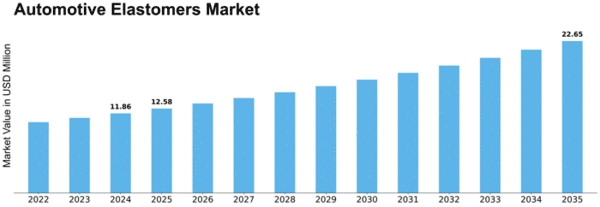

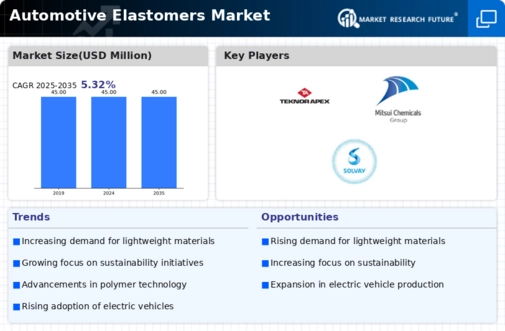


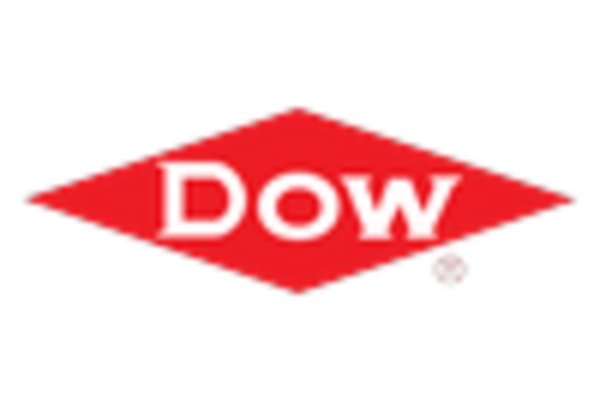
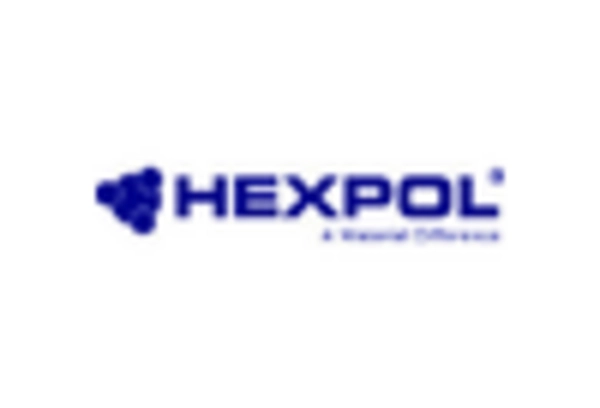
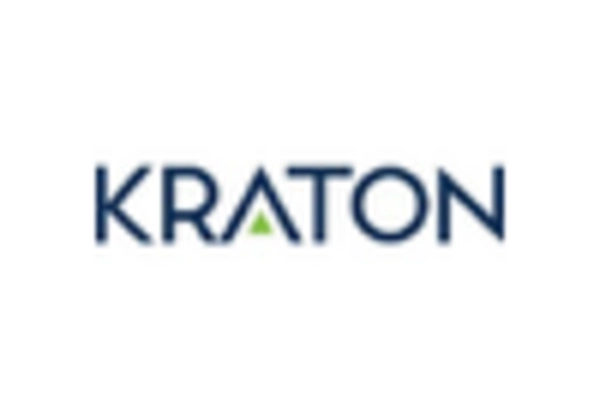










Leave a Comment